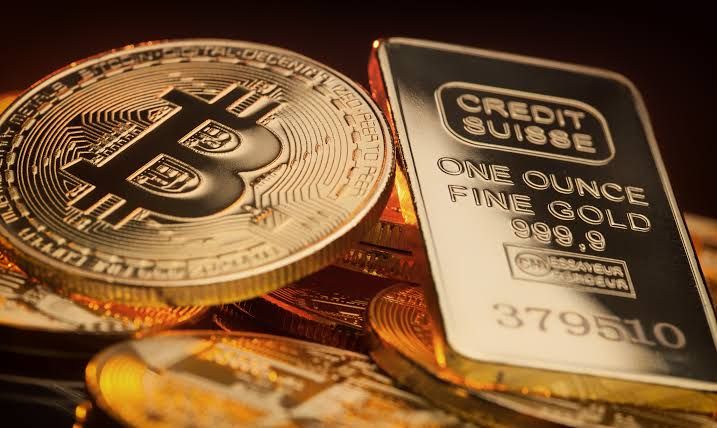Digital Gold Versus Real Gold: The Costly Misunderstanding
For many, the allure of cryptocurrency lies in its digital, borderless nature, often leading to its moniker as "digital gold". However, viewing it in this light might prove to be a miscalculation. Experts like George Milling-Stanley, Chief Gold Strategist at State Street Global Advisors, argue that cryptocurrency'

For many, the allure of cryptocurrency lies in its digital, borderless nature, often leading to its moniker as "digital gold". However, viewing it in this light might prove to be a miscalculation. Experts like George Milling-Stanley, Chief Gold Strategist at State Street Global Advisors, argue that cryptocurrency's susceptibility to substantial losses doesn't make it a viable alternative to the tangible asset of gold.
State Street Global Advisors manages the world's largest gold exchange-traded fund, SPDR Gold Shares, with a total asset value surpassing $57 billion as of last week. This year alone, the ETF's value has increased by 7%.
According to Milling-Stanley, the volatility of cryptocurrencies does not support their reputation as a strategic asset in competition with gold for the long term. Instead, he underscores gold's 6,000-year history as a monetary asset, offering a vast historical foundation to understand its investing benefits.
Gold stands as a hedge against inflation, potential weakness in the equity market, and the dollar's possible devaluation. Milling-Stanley asserts that gold's promise has historically been to enhance the returns of a properly balanced portfolio over time. Despite challenges in maintaining its value above the $2,000 an ounce mark this year, the economic conditions seem to be in gold's favor - recession or not.
"We're liable to be in a period of slow growth… Historically, gold has always done well during periods of slower growth," Milling-Stanley explained. Even in turbulent economic conditions, the age-old lure of gold shines through.
Another significant factor influencing gold demand is the relaxation of COVID-19 restrictions in various countries. In particular, China, known as the world's largest consumer of gold jewelry, second only to India, according to the World Gold Council, should see an increased demand for gold.
However, the demand isn't just driven by China and India. Countries such as Vietnam, Indonesia, Thailand, and Korea, contribute significantly to the global demand for gold jewelry, emphasizing that gold's appeal extends across continents.
As of the close of markets on Friday, gold was valued at $1,960.47 an ounce, marking an increase of over 7% this year. While cryptocurrency may dominate headlines with its unprecedented price movements, gold's proven stability and historical significance make it an asset that continues to hold its weight in the modern financial landscape.




